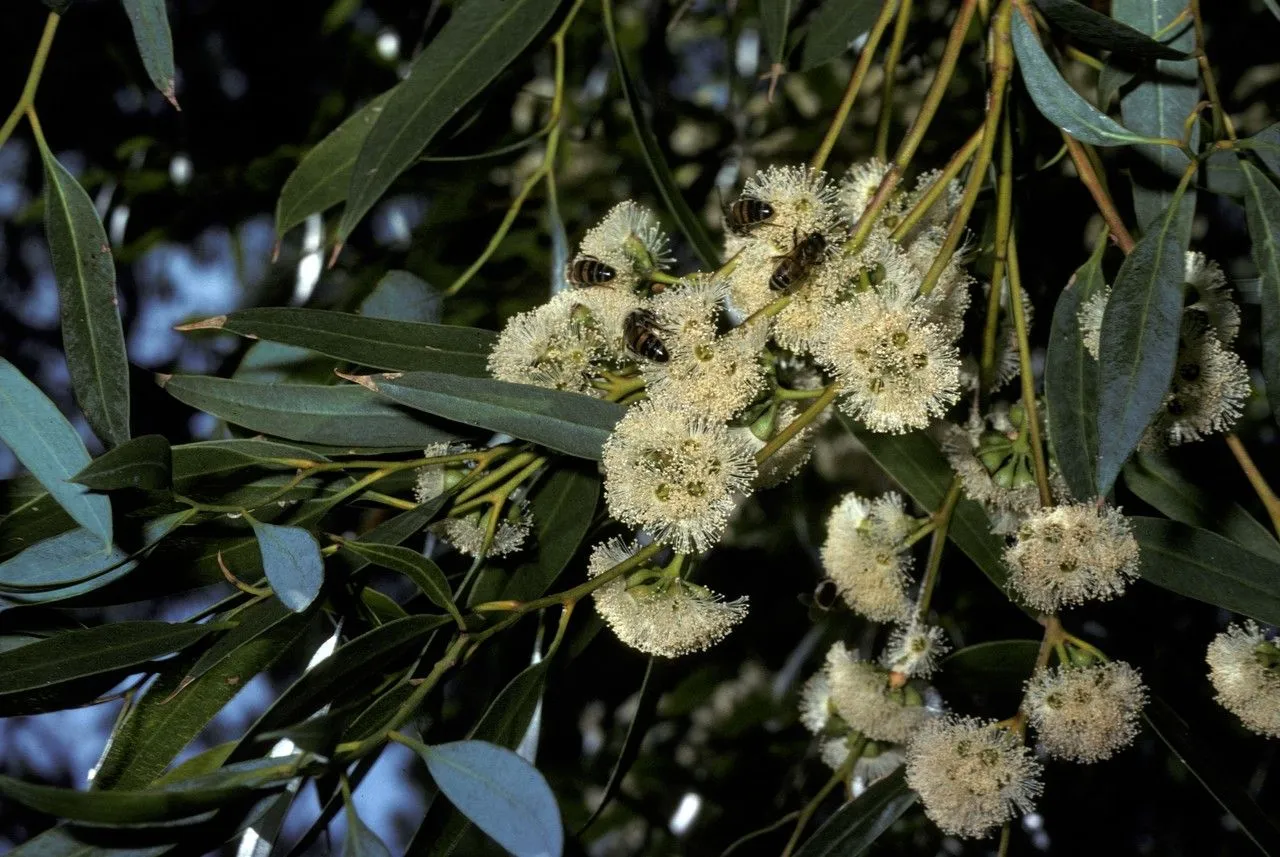
Author: F.Muell.
Bibliography: Trans. Philos. Soc. Victoria 1: 35 (1855)
Year: 1855
Status: accepted
Rank: species
Genus: Eucalyptus
Vegetable: False
Observations: S. & SE. Australia
The Yorell mallee, scientifically known as Eucalyptus gracilis, is a distinctive species within the Myrtaceae family, hailing from the biodiverse landscapes of southern and southeastern Australia. First described by the eminent botanist F. von Mueller in 1855, this resilient plant has captivated the attention of botanists and plant enthusiasts alike due to its unique characteristics and adaptive growth patterns.
Eucalyptus gracilis typically manifests as a mallee, which is a type of growth form involving multiple stems emerging from a lignotuber. This growth form is particularly advantageous in the harsh, fire-prone environments of its native regions, enabling the plant to regenerate swiftly after destructive events. Whether standing tall as a single-stemmed tree or sprawling as a multi-stemmed shrub, the Yorell mallee showcases a remarkable versatility that underscores its botanical resilience.
In terms of habitat, the Yorell mallee thrives in the diverse ecosystems of southern and southeastern Australia. Its presence is a testament to the ecological richness of these areas, where it often coexists with a variety of other native flora. The plant’s adaptability to different soil types and its ability to withstand periods of drought make it a vital component of the local environment, contributing to soil stabilization and providing shelter and food for various wildlife species.
The leaves of Eucalyptus gracilis are particularly noteworthy. They emit a pleasant, aromatic scent characteristic of many eucalypt species, which has made them a popular choice for both ornamental and practical uses. The leaves also play a crucial role in the plant’s photosynthesis process, transforming sunlight into the energy necessary for growth and survival in often challenging conditions.
Flowering primarily in the summer, the Yorell mallee produces white to cream-colored blossoms. These delicate flowers not only add to the visual appeal of the plant but also attract a variety of pollinators, including bees and birds, thereby ensuring the continuation of the species through effective pollination strategies.
The wood of Eucalyptus gracilis, like other members of the genus, is valued for its hardness and durability, making it a useful resource in local industries for purposes such as fuel and construction. Moreover, the essential oils extracted from its leaves have found applications in traditional medicine and essential oil markets, underscoring the plant’s economic significance.
In conclusion, the Yorell mallee (Eucalyptus gracilis) is more than just a plant native to Australia; it is a symbol of adaptation and survival, reflecting the intricate interplay between species and their environment. Its presence in southern and southeastern Australia is a reminder of the country’s rich botanical heritage, and its study continues to yield insights into the resilience and versatility of the eucalypt family.
Eng: yorell mallee, kong mallee, red mallee, snap-and-rattle, white mallee, yorrell
En: Yorell mallee, Kong mallee, Red mallee, Snap-and-rattle, White mallee, Yorrell
Taken Jul 1, 1992 by Daniel Barthelemy (cc-by-nc)
© copyright of the Board of Trustees of the Royal Botanic Gardens, Kew.
Family: Myrtaceae Author: (F.Muell.) K.D.Hill & L.A.S.Johnson Bibliography: Telopea 6: 402 (1995) Year: 1995 Status:…
Family: Rubiaceae Author: Pierre ex A.Froehner Bibliography: Notizbl. Bot. Gart. Berlin-Dahlem 1: 237 (1897) Year:…
Family: Sapindaceae Author: Koidz. Bibliography: J. Coll. Sci. Imp. Univ. Tokyo 32(1): 38 (1911) Year:…
Family: Asteraceae Author: A.Gray Bibliography: Pacif. Railr. Rep.: 107 (1857) Year: 1857 Status: accepted Rank:…
Family: Fabaceae Author: Medik. Bibliography: Vorles. Churpfälz. Phys.-Ökon. Ges. 2: 398 (1787) Year: 1787 Status:…
Family: Aspleniaceae Author: (Cav.) Alston Bibliography: Bull. Misc. Inform. Kew 1932: 309 (1932) Year: 1932…